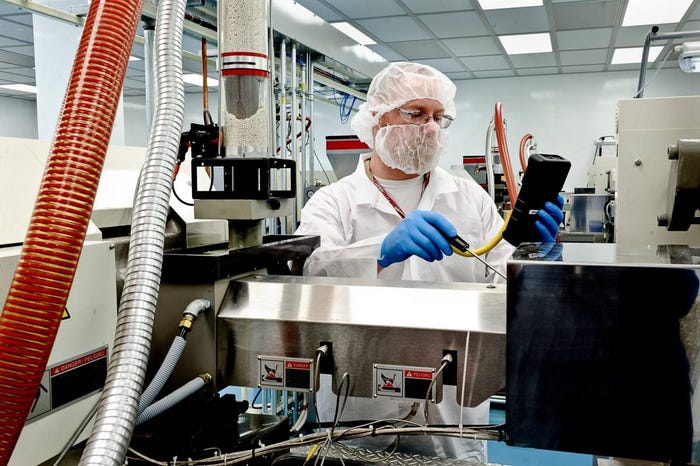One of the upshots of the trend toward cost reduction in medical plastics is greater use of disposable products."It seems counter intuitive that it saves money to dispose of products after a single use," one medical expert told Plastics Today in an interview at MD&M West (Anaheim, CA) last month. "But if you consider the costs of sterilization and inventory management, there definitely can be a savings involved."
March 2, 2012

One of the upshots of the trend toward cost reduction in medical plastics is greater use of disposable products.
"It seems counter intuitive that it saves money to dispose of products after a single use," one medical expert told Plastics Today in an interview at MD&M West (Anaheim, CA) last month. "But if you consider the costs of sterilization and inventory management, there definitely can be a savings involved."
|
A new clean room at Mack Molding focuses on orthopedic disposables. |
Costs of sterilization are increasing as a result of new efforts to rid hospitals of germs that can cause infections. Many suppliers are introducing materials that have better chemical resistance or heat stability to withstand sterilization processes. The new materials are more costly, and that can help tip the economic balance toward disposables.
"It can cost up to $50 to $100 per device for steam sterilization," says Josh Blackmore, global healthcare manager, RTP (Winona, MN). "The hospitals are increasingly adding up those costs."
The trend is very apparent in orthopedic instrumentation.
"Patients benefit from a lower risk of infection and hospitals avoid the time and costs of cleaning and resterilization," says Chris Wartinger, business development manager at Mack Medical (Arlington, VT).
Mack just added a Class 100,000 clean room that will produce disposable and other medical parts for orthopedic customers. One example of the trend to disposables is plastic parts that simulate bones for trialing during knee replacement surgeries, Jeff Somple, president of Mack's Northern Operations, told Plastics Today in an interview.
Disposable tubing
In another example, the lay-flat tubing process is now being widely employed to produce disposable sheaths used as barriers for colonoscopes, endoscopes, speculums, probes and many other devices that provide protection from moisture, blood, or bacteria prevalent within the body. Reason? They are less costly than extensive cleaning or reprocessing of devices.
Extrusion of lay flat tubing has been around for several years in packaging applications, typically using polyethylene in applications with greater than 1.5 inches in lay-flat width. Some medical applications require more durable materials, and also a smaller width to fit through a 3mm ID channel for a diagnostic scope.
"Polyzen (Apex, NC) has perfected the extrusion process for small diameter, thin walled lay-flat tubing," says Rubin Shah, director of business development. "Expanding our capabilities beyond more ubiquitous higher thickness tubes has given Polyzen a clear advantage over its competitors. A specialty urethane was formulated for the application.
You May Also Like



